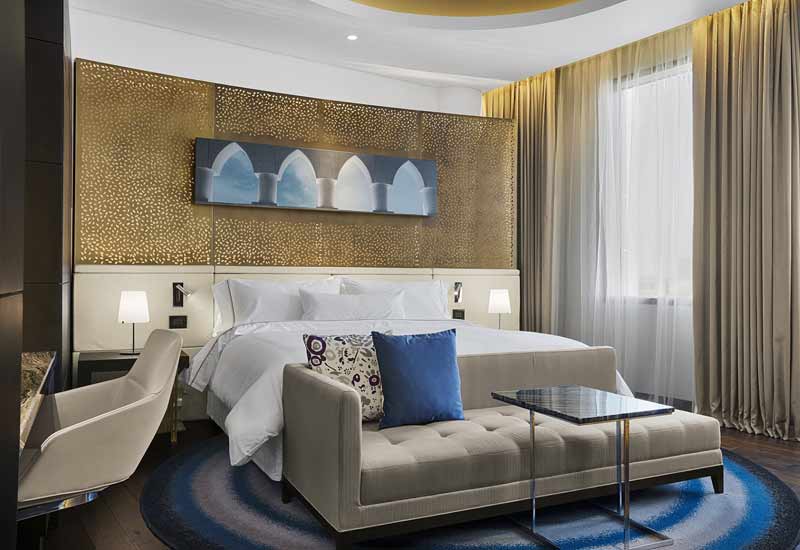![[L-R] Gianrico Esposito, the general manager at The Westin Doha Hotel & Spa, and Brian Povinelli, senior vice president, global brand leader for Westin and Le Méridien.](/pictures/Gianrico-Esposito-and-Brian-Povinelli.jpg) [L-R] Gianrico Esposito, the general manager at The Westin Doha Hotel & Spa, and Brian Povinelli, senior vice president, global brand leader for Westin and Le Méridien.
[L-R] Gianrico Esposito, the general manager at The Westin Doha Hotel & Spa, and Brian Povinelli, senior vice president, global brand leader for Westin and Le Méridien.
He continues: “For example, Westin will have a specific design aesthetic, while Le Méridien’s last 20% will be about a sense of creativity and discovery to unlock the destination. It’s all about celebrating the local, through art and handicraft. And the infusion of local flavours in the F&B, offering a cultural insight into the city. For customers it looks different, but in reality it is the same platform.”
It’s not all about top-down brand strategy, Povinelli concedes. He says that Starwood’s general managers — “the CEOs of their hotels” — dictate the culture of the brands at a property level. “They have to understand the vision for the brand and its positioning in the market.
“At Westin the ‘Six Pillars of Wellbeing’ [Sleep Well, Eat Well, Move Well, Feel Well, Work Well and Play Well] is their toolkit, but then they have a good amount of freedom to activate that for the local market. For example, under ‘Move Well’, how people want to exercise is very different around the world.
“It’s freedom within a framework, which can be tighter or looser depending on the brand,” adds Povinelli.
“Le Méridien has more opportunity, especially in F&B, to bring creative flair and a big local story to life. Whereas Aloft, which is probably our most templated brand, looks the same everywhere around the world. Because there’s a cost model that makes that brand work.”
Innovation from the ‘ground-up’ is encouraged and celebrated. “We capture best practices and share them across the properties by training our associates. But the more organically it happens the more powerful it is — as powerful as any idea we come up with at a corporate level.”
Povinelli cites Westin’s kids’ healthy eating programme as an example of something that started as a local enterprise. “A couple of hotels on their own initiative created a kids’ chefs concept. It was a great success. So they put together a toolkit that’s now been passed around the globe.”
The main opportunities for the local personalisation of a global hotel brand are in the arenas of service and F&B, says Povinelli. F&B is particularly market driven.
“There is no Starwood F&B venue at a concept level that is forced from the centre,” he insists. “Westin’s Seasonal Tastes [all-day dining restaurant] is probably the most widely spread. But it can serve food for the local palette. There’s also the Prego Italian and East Chinese concepts, which we make as authentic as we can make it with the ingredients available.
“And with Sabai Thai [at Westin Doha] we have tried to do something really authentic — to make the restaurant like a piece of Thailand. It gives the guest the opportunity to take a journey,” he says.

| Advertisement |









 Search our database of more than 2,700 industry companies
Search our database of more than 2,700 industry companies









